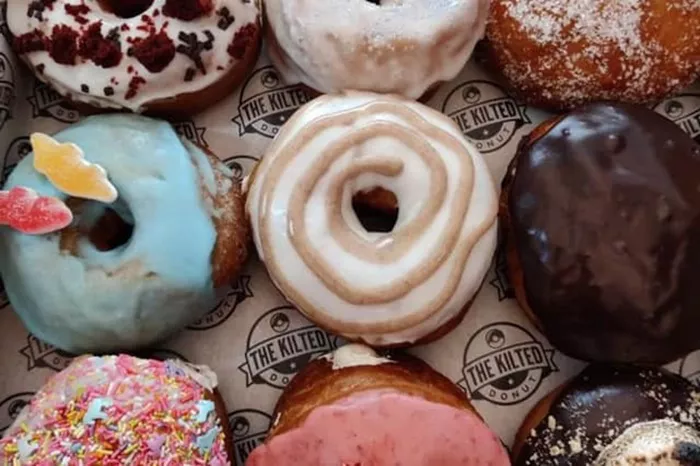The history of donuts is a fascinating journey that spans centuries and continents, evolving from ancient culinary practices to become a beloved treat in modern society. This article explores the origins of donuts, tracing their evolution through various cultures and highlighting significant milestones that have shaped their identity.
Ancient Origins of Fried Dough
The concept of frying dough is not unique to any one culture; it has been a part of human culinary traditions for millennia. Archaeological evidence suggests that ancient civilizations, including the Greeks and Romans, indulged in fried dough. The Greeks enjoyed a dish called “scriblita,” which consisted of fried dough often sweetened with honey. Similarly, the Romans created their own versions, frying strips of pastry dough and sometimes coating them with fish sauce125.
In the Middle Ages, Arab cooks began frying small portions of unsweetened yeast dough, which they would then drench in syrup. This practice spread into northern Europe during the 1400s, where it influenced various regional cuisines. In Germany, for example, these early fried treats were often savory, filled with meat or mushrooms due to the scarcity of sugar24.
Dutch Influence in America
The journey of the donut as we know it today can be traced back to Dutch immigrants who settled in New Amsterdam (now New York) during the 17th century. They brought with them a traditional treat known as “oliekoeken,” or “oil cakes.” These were essentially balls of sweetened dough fried in pork fat until golden brown. While these early versions did not have the iconic ring shape we associate with modern donuts, they laid the groundwork for future innovations134.
Washington Irving’s 1809 book, A History of New York, provides one of the earliest mentions of “doughnuts,” describing them as “balls of sweetened dough, fried in hog’s fat.” This reference highlights the cultural significance of these treats among Dutch settlers and marks a pivotal moment in the evolution of the donut in America13.
The Evolution of Shape: The Birth of the Donut Hole
Despite their popularity, early oliekoeken had a common problem: their centers often remained raw while the outer layers cooked. To address this issue, Captain Hanson Gregory is credited with inventing the ring-shaped donut in 1847. According to popular lore, he punched a hole in the center of his dough ball using a tin pepper box aboard a lime-trading ship. This simple yet revolutionary act allowed for even cooking and resulted in what we now recognize as the classic donut shape245.
Gregory’s innovation not only improved cooking efficiency but also contributed to the donut’s unique identity. Variations on this story abound; some suggest that Gregory impaled his donut on a ship’s steering wheel during a storm to keep his hands free, while others claim he was inspired by angels in a dream. Regardless of its origins, this transformation marked a significant milestone in donut history245.
See also: How Long Can You Freeze Donuts?
Culinary Recognition and Popularization
As donuts gained popularity in America, they began to take on new forms and flavors. By the mid-19th century, recipes for donuts that closely resembled today’s versions were being published. The first known printed recipe appeared in an English cookbook from 1803, which included donuts as part of an appendix on American recipes13.
The rise of industrialization further accelerated donut production. In 1920, Russian immigrant Adolph Levitt introduced the first automated donut machine. This innovation was showcased at the 1934 World’s Fair in Chicago and was heralded as “the food hit of the Century Of Progress.” Levitt’s machine allowed for mass production and distribution, making donuts more accessible to the general public14.
Cultural Significance and Wartime Connections
During World War I, donuts took on a symbolic role as comfort food for American soldiers. Female Salvation Army workers known as “Doughnut Girls” prepared and distributed these treats to soldiers fighting overseas. This act provided not only nourishment but also a taste of home during difficult times. The term “Doughboys” used to refer to American soldiers during this period is often associated with these sweet confections24.
In World War II, similar efforts continued with “Doughnut Dollies,” who served donuts to troops and helped boost morale on the front lines. The connection between donuts and American patriotism solidified their place in cultural history24.
Modern Innovations and Globalization
The latter half of the 20th century saw an explosion in donut culture across America. Chains like Dunkin’ Donuts and Krispy Kreme emerged as dominant players in the market, popularizing various flavors and styles. Dunkin’ Donuts opened its first shop in 1950 and quickly became synonymous with coffee and donuts across the nation14.
In recent years, there has been a resurgence of interest in artisanal donuts, with specialty shops popping up in major cities offering unique flavors like maple bacon or matcha green tea. This trend reflects broader culinary movements toward creativity and innovation within traditional food categories16.
Conclusion: A Sweet Legacy
The history of donuts is not merely about a sweet treat; it embodies cultural exchange, innovation, and resilience through time. From ancient fried pastries to modern-day delicacies enjoyed worldwide, donuts have evolved into much more than just food—they represent comfort, creativity, and community.
As we indulge in these delightful confections today—whether glazed or filled—we celebrate centuries of culinary tradition that has shaped this beloved pastry into an enduring symbol of joy and indulgence across cultures. The journey from oily cakes to gourmet donuts showcases humanity’s love for creativity and sweetness—one bite at a time.
Whether you prefer your donuts classic or avant-garde, their rich history serves as a reminder that food is not just sustenance; it’s also an expression of culture and identity that connects us all through shared experiences around the table.
Related topics:

